














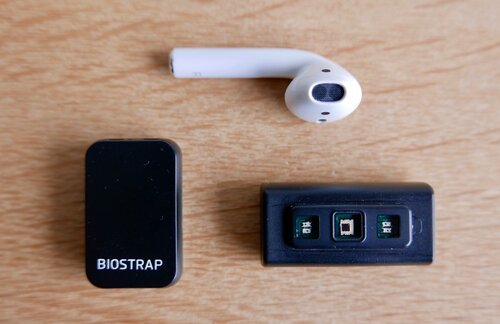



This Monday I completed 235KM on my fixed gear bike during the Fietselfstedentocht 2023. It was a nice ride with fair weather and favourable wind conditions. Yet, I took the challenge seriously and prepared myself with some proper training. In this post I'll have a look at the trend data from my WHOOP in preparation for the Elfstedentocht.

How often do you look in the mirror? Probably more than a few times a week! I have been thinking about this ever since I received my newest WHOOP 4.0 biometric sensor. It's great. But, why do I wear it? What value does it provide? Why should you wear it?

Today I witnessed the birth of my daughter! You feel humble as a man, witnessing the labour and magic. Not sure if I can come up with something having more impact on a man than this. For the purposes of science and curiosity I wore a biometric sensor, and this is what it recorded.

This month a special piece of wearable tech arrived for me to try: the Tap Strap. Worn on your fingers, the Tap Strap recognises tapping and moving. It enables you to control and type your computer without a mouse or keyboard!

For the past week I have been riding my bicycle with Omata One, a special bike computer. Its mechanical hands indicate speed, distance, ascent and time ridden measured using precise GPS data. It is fun, read along to know why.
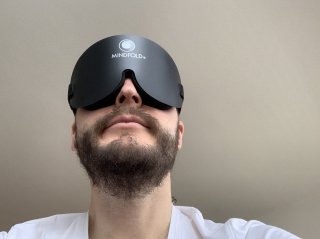
Over the past few weeks I have been experimenting with wearing a sleep mask in bed, blocking all light. Our bodies produce the sleep hormone, melatonin, in darkness. Living in an environment awash in artificial light, is therefore exactly the sort of thing that disrupts one's circadian rhythm. Can a simple mask help?

The past months I have been wearing the WHOOP Strap 3.0, a wearable sensor that collects health and fitness data. It's different compared to most other fitness bands as it was designed with professional athletes in mind. It is focussed on daily strain, recovery and sleep. Read along to find out how this works.

For an exciting new project I have been experimenting with computer vision using TensorFlow. I wanted to achieve realtime human pose detection to drive interactive video projections and games. Time to dive into the world of machine learning, tensors and computer vision!
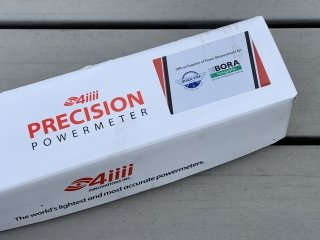
After I created a minimal road bike, I decided to install a power meter to find out what's it like to measure the power output of my legs. What can you learn from a power meter? Is it difficult to install? Is it worth it? Read along to find out.
Sleep monitoring is a popular feature of many smartwatches and wearables. Devices like Fitbit, Withings, Apple Watch and Biostrap analyse biometrics during your sleep. These wearables are worn on the wrist and use optical sensors to capture your heart rate. I wondered how the optical sensors would compare to a high resolution chest strap HR-monitor.

With modern wearables, smartwatches and fitness bands, it has become easy and common to measure your heart rate. There are however fundamental differences in sensor types. Some sensors capture the electrical signal from your heart while others use light to analyse the blood flowing through your vessels. If you're interested in measuring heart rate, it's good to understand these differences.

This week I took my bike for a long distance (211KM) ride around the Dutch Markermeer, solo! Unlike participating in an organised event with service, support and company along the way, going solo requires a different preparation, mindset and planning. Read along for some practical tips for long distance cycling.

This month I have intensified my training to become fit for this year's Fietselfstedentocht, a 235KM bicycle ride through Friesland. Over the years I have tested different kinds of bike computer setups: from dedicated (and expensive) Garmin Edge bike computers to no data at all. Eventually I came up with a flexible setup to gather advanced ride data using my smartphone, let me explain how this works.

This month Apple launched a new Apple Watch series and released an update to watchOS. The focus of the smartwatch is more and more gearing towards health and fitness. This made me curious, how well does Apple Watch work for different activities?
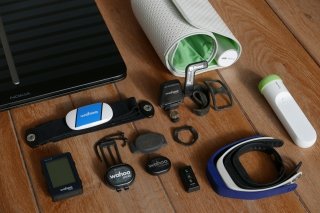
A good customer of mine was once a physiotherapist, he told me about people asking him to "feel their muscles" to tell them how they where doing. "Crazy!" he told me: "I can never feel better than the people themselves, if they only would listen to their body". This caused me to question the health and fitness sensors I use.

This month I made my debut as amateur actor. I am no Hollywood star, nor do I envy to become one. But I do like crazy experiments and operating outside of my comfort zone often leads to new and refreshing insights. I took part in an amateur drama play and - in the name of science and fun - strapped myself with sensors to measure what happened to my body.

For a few years now, I commute to work using a bicycle. I have lost more than 15KG since I stopped using my scooter. This week I tested a VanMoof Electrified S, an electric bike with an industrial, minimal design. Is it any good? How does it compare to a normal bike? Will an electric bike make you lazy? Read along to find out!

Most wearables (smartwatches, fitness trackers, etc.) use very basic sensors to capture heart rate. Their signal is binary: just counting beats. Biostrap is different, instead of just checking pulses, it captures a high-fidelity PPG waveform. These waveforms are the same kind that doctors use, making me wonder what I could learn from them!
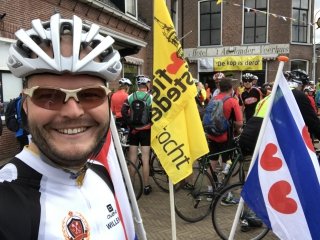
This month I cycled the Fietselfstedentocht, a 235KM tour through Friesland. This tour brings you through various Frisian cities throughout one of the most Northern provinces of the Netherlands. The tour was first organised in 1912 and has grown to become legendary due to its history, challenge and popularity; well worthy of a blog post!

One year ago I started recording all my bike rides, including commutes, short grocery trips and long Gran Fondos. I equipped my bicycles with Garmin Edge computers that recorded location (GPS), speed, cadence and my heart rate. I covered more than 7683 kilometers during 320 hours of riding. It's time to review all the data and share some photos I took along the ride!

















